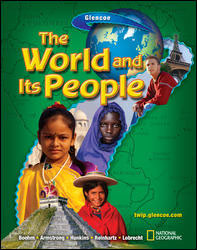
The World and Its PeopleChapter 6: MexicoChapter OverviewsMexico forms part of a land bridge that connects North America and South America. It is made up of three mountain ranges, a large central plateau, and coastal lowlands. Earthquakes and volcanic activity affect the land and people of Mexico. Due to differences in latitude and altitude, there are three distinct climate zones in Mexico—the tierra caliente, the tierra templada, and the tierra fría. Landforms and climate combine to create three economic zones. Although agriculture is still important to the Mexican economy, in recent years the country has industrialized. Manufacturing, service industries, and oil refining play larger roles in the economy. Mexico's Native American and European heritage shapes the country's culture. The Olmecs built the first civilization in the Americas around 1200 B.C. The Mayan and Aztec civilizations were the best known of Mexico's early people. A Spanish colony, Mexico won its independence in 1821. Today Mexico's government is a federal republic. About 75 percent of Mexicans live in urban areas. Beautiful plazas and important buildings are located in the center of these cities. In the poorer sections, people make houses out of whatever material they can find. Mexico's government must find ways to handle the country's growing population, pollution, and foreign debt. |  |















